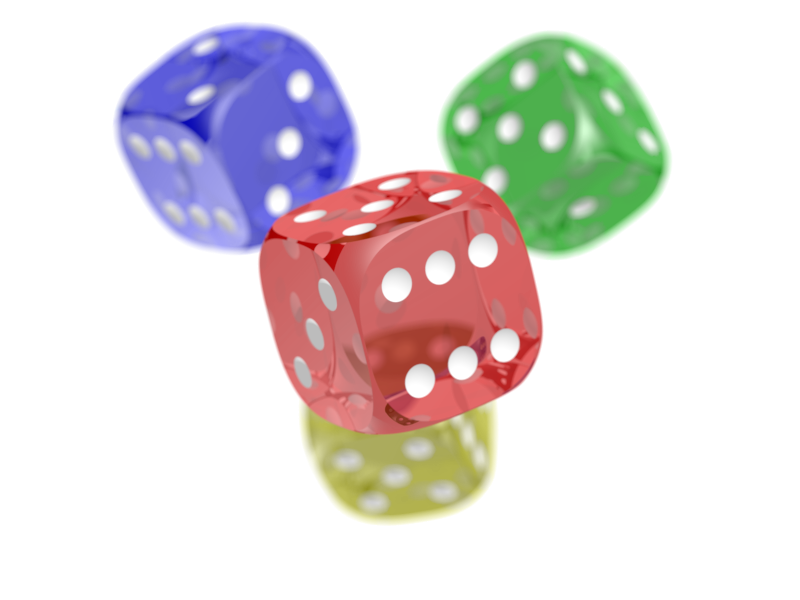Throwing dice
| Home |
| Research |
| Accretion disks/Jets |
| Codes/Toolbox |
| Publication list |
| CV |
| Contact |
| Other stuff |
| SED models |
| astroKubuntu |
| astro-calculator |
| Photo Galleries |
| Bookmarks |
| Affiliation/Alma mater |
| UMich Astronomy |
| API Amsterdam |
| Yale Astronomy |
| IIT Kanpur |
| Presidency Kolkata |

We take N dice, where each one is a standard 6-sided, unloaded die. We define a trial as throwing all N of them once. Alternately it could also be throwing a single die N times. We record the sum of these N throws. The trial is repeated many many times. The probability of obtaining a certain sum can be computed relatively easily (at least when N is small). How many trials do we need so that the observed distribution closely resembles the theoretically expected distribution? Below are a few animations that illustrate this:
N=1: 1, 10, 100, 1,000, 10,000, 100,000, 1,000,000 and 10,000,000 trials.
N=2: 1, 10, 100, 1,000, 10,000, 100,000, 1,000,000 and 10,000,000 trials.
N=5: 1, 10, 100, 1,000, 10,000, 100,000, 1,000,000 and 10,000,000 trials.
N=10: 1, 10, 100, 1,000, 10,000, 100,000, 1,000,000 and 10,000,000 trials.
N=20: 1, 10, 100, 1,000, 10,000, 100,000, 1,000,000 and 10,000,000 trials.
N=50: 1, 10, 100, 1,000, 10,000, 100,000, 1,000,000 and 10,000,000 trials.